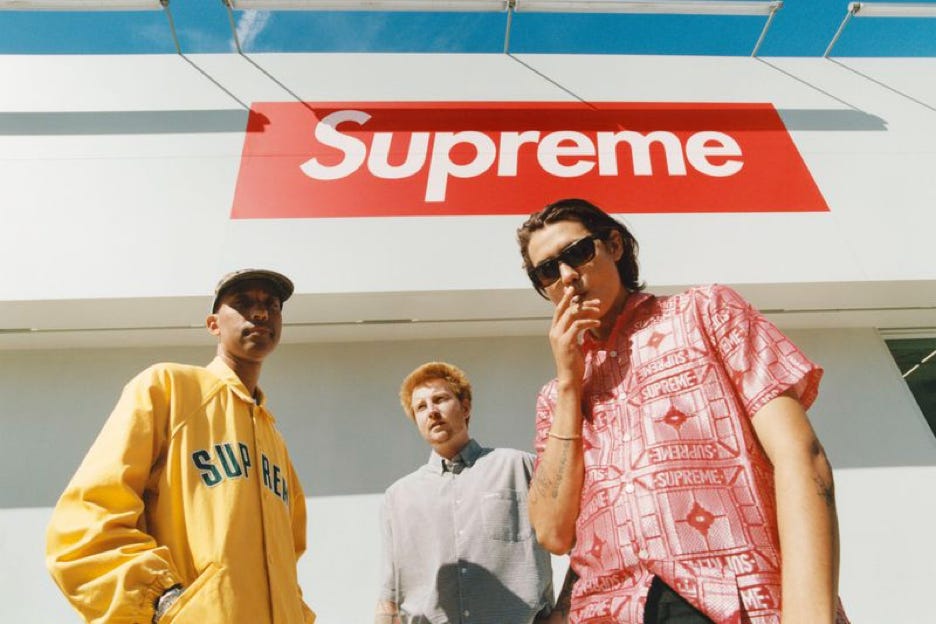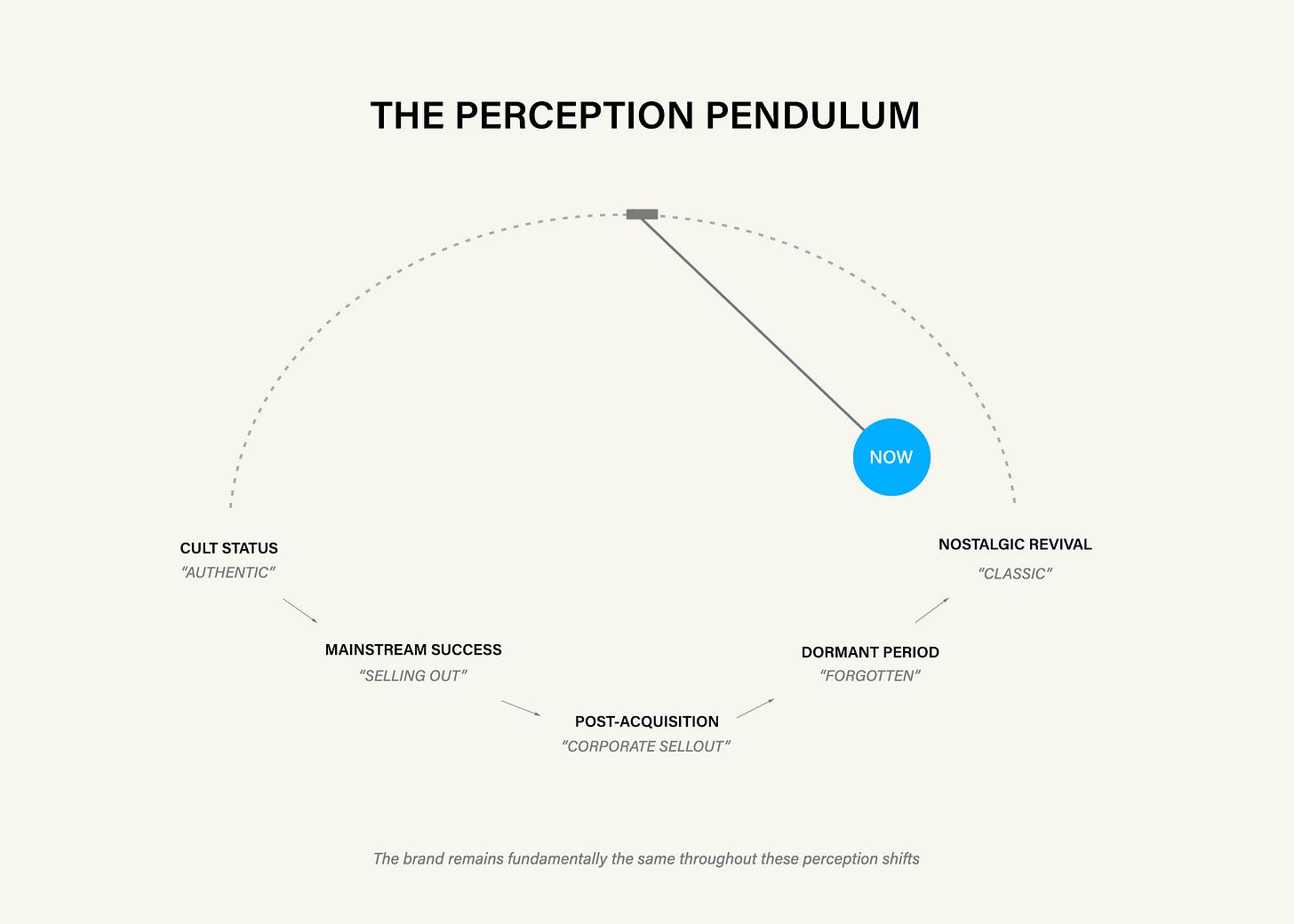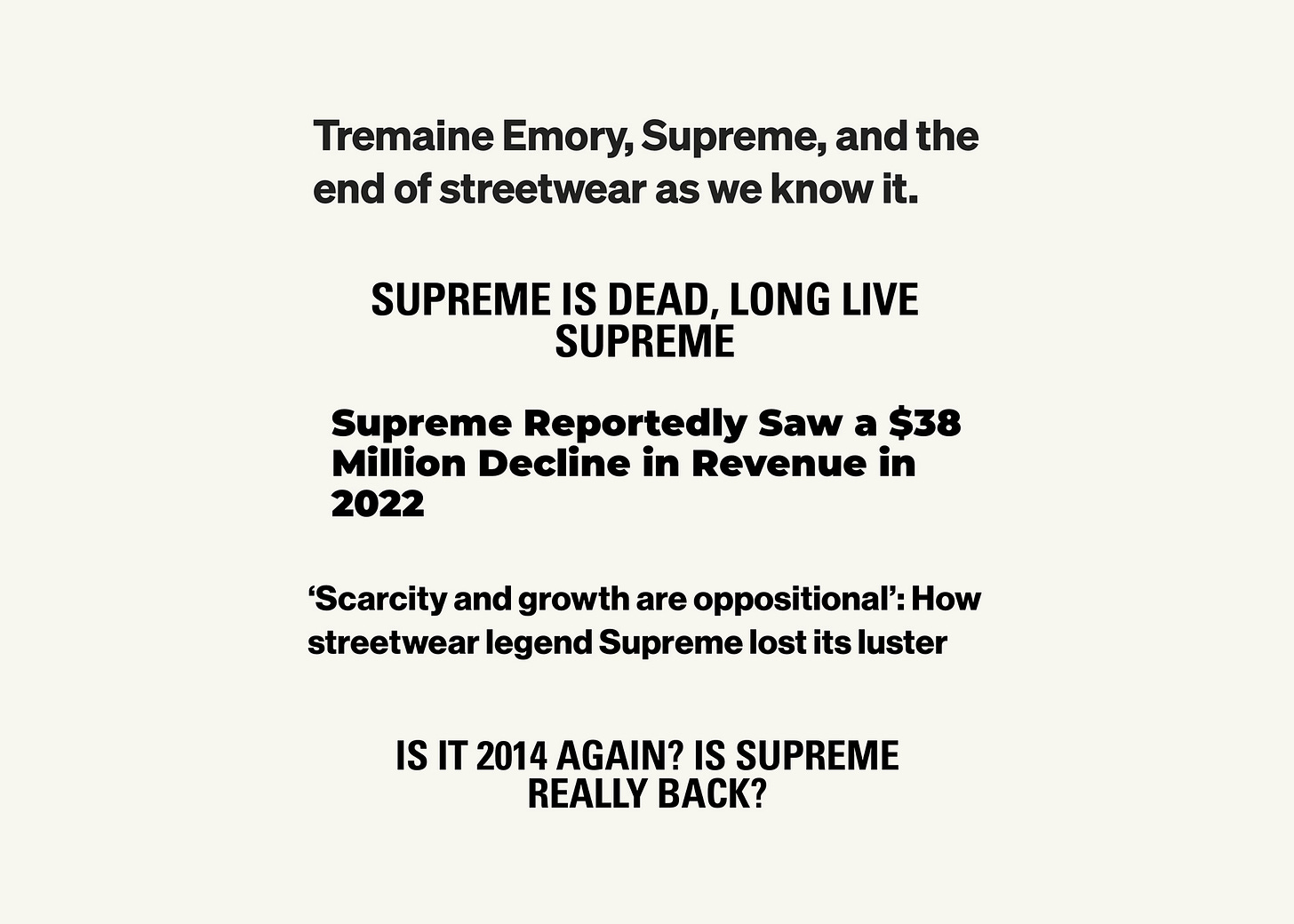In the world of fashion and cultural brands, there exists a curious paradox: what we perceive as radical change is often merely a shift in our own perspective. While brands may undergo surface-level transformations—new owners, different creative leadership, expanded distribution—their fundamental essence typically remains unchanged. Yet public sentiment swings wildly with each announcement, creating a perception pendulum that rarely reflects reality.
Supreme: A Case Study in Perception Whiplash
Few brands illustrate this phenomenon better than Supreme. Founded in 1994 as a skateboard shop in New York, Supreme built its reputation on exclusivity, underground credibility, and a distinct aesthetic. When VF Corporation acquired the brand for $2.1 billion in 2020, the internet erupted with eulogies for Supreme's "authentic era."
"Supreme is over," declared longtime fans. "Corporate sellout," echoed others across social media. The narrative was clear: Supreme had abandoned its roots for mainstream success and would inevitably water down its identity to maximize profits.
Yet in the years following the acquisition, Supreme's operations remained remarkably consistent—limited drops continued on the same schedule, collaborations maintained their cultural relevance, and the scarcity model that built the brand persisted. The product hadn't changed; only the perception had.
This pattern repeated when Tremaine Emory was appointed Creative Director. Initially, his arrival sparked hope for a creative renaissance, only for his eventual departure to trigger another wave of cynicism. Through it all, Supreme's collections remained true to the brand's historic DNA, yet consumers couldn't help but view these releases through the lens of corporate influence and creative turmoil.
The Predictable Cycle of Brand Perception
This perception pendulum follows a nearly universal pattern across fashion and cultural brands:
Discovery & Admiration: A brand gains recognition for its unique point of view and authentic positioning
Peak Popularity: Increased visibility leads to mainstream acceptance
Backlash: Overexposure triggers claims of declining quality or "selling out"
Dormant Period: The brand continues its work while public attention moves elsewhere
Nostalgic Revival: A new generation discovers the brand without prior baggage, or original fans rediscover what they initially loved
The irony is that throughout this cycle, many brands maintain consistent quality and creative direction. Comme des Garçons, Nike, and countless others have weathered similar perception shifts while their core approach remained stable.
Understanding the Disconnect
Why does this disconnect between reality and perception persist? Several factors are at play:
Personal Evolution: As we grow and change, our relationship with brands naturally evolves
Cultural Context: External events and shifting cultural values influence how we interpret brand actions
Narrative Power: Stories about a brand often overshadow the actual products they produce
Authenticity Paradox: Success itself becomes evidence of "selling out" in certain subcultures
What's remarkable is how little the actual products matter in this equation. A hoodie from Supreme's 2018 collection is functionally and aesthetically similar to one from 2022, yet they exist in entirely different perception ecosystems.
The Pendulum Always Swings Back
For brands that maintain quality through perception shifts, redemption is almost inevitable. The same Supreme that was declared "dead" after its acquisition will likely experience a renaissance of cultural relevance in the coming years—we’re already feeling this shift with the most recent release. A new generation, unburdened by memories of the brand's independent era, will discover Supreme on its own merits.
This cycle offers an important lesson for both consumers and brands: great product outlasts fleeting perception. While public sentiment may swing wildly between admiration and disdain, brands that stay true to their core vision ultimately endure.
Perhaps it's time we acknowledged our own role in this perception pendulum and learned to see brands for what they are—not what narratives tell us they've become.









